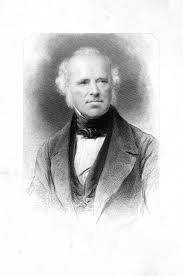Regency Personalities Series
In my attempts to provide us with the details of the Regency, today I continue with one of the many period notables.
Richard Sheepshanks
30 July 1794 – 4 August 1855

Richard Sheepshanks
He was born the son of Joseph Sheepshanks, a Leeds textile manufacturer of the well-to-do Sheepshank family of Bilton, Harrogate and received education at the Trinity College, Cambridge, graduating in 1816. He was called to the bar in 1824 and took orders in Church of England in 1825, but did not practice either profession as the death of his father left him with sufficient wealth to pursue his scientific interests.
He had six children from a relationship with an Irish dancer, one of whom was Eleanor Louisa Moravia Henry, also known as Nelly. Sheepshanks gave financial support to the dancer and her husband, who in turn claimed paternity.
He served as editor of Monthly Notices of the Royal Astronomical Society and greatly improved their content. In 1830 he was elected a Fellow of the Royal Society In 1832, he got involved in the lawsuit of Edward Troughton against Sir James South, in which Troughton demanded payment for an equatorial mounting that he had supplied to South, but which South claimed to be defective.
Sheepshanks informally served as legal counsel to Troughton; South’s legal counsel was Drinkwater Bethune. Troughton prevailed in the lawsuit. In 1833, he recommended withholding publication of an early edition of Stephen Groombridge’s star catalogue, which was being published posthumously, after discovering the edition contained errors.
A final corrected edition was later published in 1838 under the auspices of George Biddell Airy. In his later career he worked on establishing a standard of length for imperial measures. He was reportedly deeply sceptical of the work of Charles Babbage and of his ability to deliver a working Difference Engine or Analytical Engine. The two men publicly attacked each other.
He suffered a stroke (“apoplexy”) on 29 July 1855, died on 4 August and was buried at Trinity College. There is a memorial notice at St. John’s Church, Bilton in Harrogate.





























